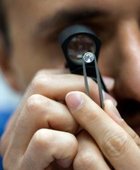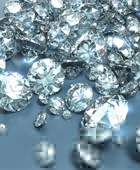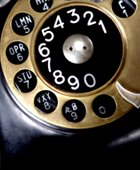Diamonds are prized for their brilliance and durability, but even these tough gemstones need proper care and maintenance to retain their luster and value over time. Whether you own a diamond engagement ring, necklace, or earrings, regular cleaning and mindful handling are essential to ensuring that your diamonds remain as dazzling as the day you acquired them. This comprehensive guide covers everything you need to know about caring for your diamond jewelry, from cleaning methods and storage to professional checkups and preventive measures.
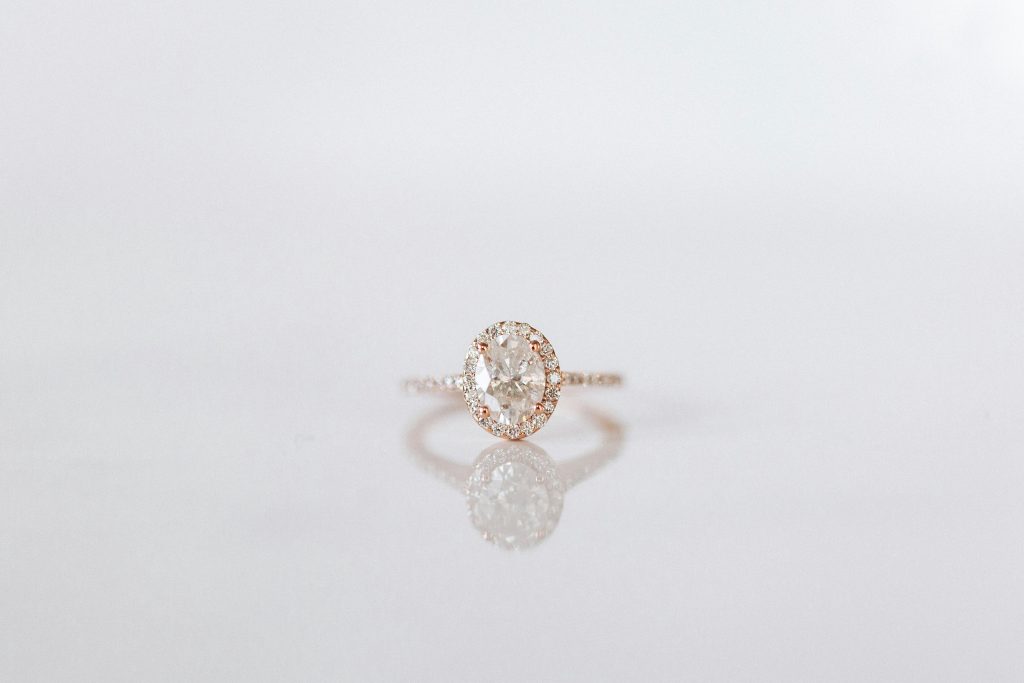
Understanding Diamond Durability: What You Need to Know
Diamonds are renowned for their hardness, ranking 10 on the Mohs scale of mineral hardness, meaning they can only be scratched by other diamonds. However, their hardness doesn’t make them immune to damage. Diamonds are still susceptible to chipping, especially along the edges or facets, and they can become dull or dirty if not properly cared for.
Why Do Diamonds Lose Their Sparkle?
Despite their natural brilliance, diamonds can lose their sparkle over time due to several factors. The most common cause is the buildup of oils, dirt, and debris from everyday wear. Lotions, soaps, skin oils, and even exposure to household cleaning agents can create a film over the diamond’s surface, reducing its ability to reflect light and diminishing its brilliance.
Additionally, diamonds can become scratched if they come into contact with abrasive surfaces or materials. Although diamonds are extremely hard, the metal in the jewelry setting—often gold or platinum—can be scratched or dented, which can affect the security of the diamond and its overall appearance. Therefore, regular maintenance is critical to preserving both the diamond and its setting.
Daily Care Tips for Diamond Jewelry
To keep your diamond jewelry in top condition, it’s important to adopt some simple daily habits. These preventive measures can go a long way in preserving your diamond’s sparkle and preventing damage.
- Avoid Contact with Chemicals One of the most important rules for maintaining your diamonds is to avoid exposing them to harsh chemicals. Household cleaning agents, such as bleach, chlorine, and ammonia, can damage both the metal and the diamond. Chemicals can discolor or corrode the metal setting, while certain compounds may cause residue buildup on the diamond’s surface. When cleaning, doing dishes, or swimming in chlorinated pools, it’s best to remove your diamond jewelry.
- Remove Jewelry During High-Impact Activities While diamonds are durable, their settings are not always as resilient. Engaging in high-impact activities, such as sports, gardening, or exercising, can subject your diamond jewelry to potential damage. It’s easy for a ring to get caught or knocked, which can loosen the setting or chip the stone. Always remove your diamond rings, bracelets, and earrings during physical activities to reduce the risk of damage.
- Store Diamonds Separately Proper storage is key to preventing your diamond jewelry from scratching or tangling with other pieces. Because diamonds can scratch other gemstones and metals, it’s essential to store them separately. Use individual compartments in a jewelry box or soft fabric pouches for each piece of diamond jewelry. If possible, keep your diamonds in a padded jewelry case to provide added protection.
- Inspect Your Jewelry Regularly Checking your diamond jewelry regularly for signs of wear and tear can help prevent serious damage in the long run. Look for loose prongs, bent or worn settings, and any chips or cracks in the diamond. If you notice any issues, it’s important to have your jewelry examined by a professional jeweler who can repair or reinforce the setting before the diamond is at risk of falling out.
How to Clean Diamond Jewelry at Home
While professional cleaning is recommended every year or so, regular at-home cleaning can help keep your diamonds sparkling between professional visits. However, it’s important to use the right techniques and materials to avoid damaging the diamond or its setting. Here’s how to safely clean your diamond jewelry at home:
- Use a Mild Soap and Water Solution The safest and most effective method for cleaning diamond jewelry at home is to use warm water and mild dish soap. Fill a bowl with lukewarm water and add a few drops of soap, creating a gentle solution. Place the diamond jewelry in the solution and let it soak for about 15-20 minutes to loosen any dirt or grime. After soaking, gently scrub the diamond with a soft-bristle toothbrush, paying special attention to the setting where dirt can accumulate. Rinse the jewelry under warm running water, and dry it with a lint-free cloth or let it air-dry on a clean surface.
- Avoid Harsh Cleaners While it may be tempting to use stronger cleaning agents, such as bleach, acetone, or alcohol, these can cause more harm than good. Harsh chemicals can erode the metal in the setting, and certain cleaners can leave a residue on the diamond that diminishes its brilliance. Stick to gentle cleaners like dish soap and water, or opt for a professional-grade jewelry cleaner specifically designed for diamonds.
- Be Gentle with Vintage or Antique Jewelry If your diamond jewelry is vintage or antique, it’s important to exercise extra care when cleaning. Older settings, particularly those with intricate filigree or delicate prongs, can be fragile and may not withstand the same cleaning methods as newer pieces. Instead of scrubbing, gently swish the jewelry in a soap and water solution and use a soft cloth to remove dirt. For particularly valuable or delicate pieces, it’s best to leave cleaning to a professional jeweler.
Specialized Cleaning Tools for Diamonds
While soap and water are often enough for routine cleaning, there are specialized tools available that can make cleaning diamonds more efficient and effective. These tools are designed to provide a deeper clean while being gentle on both the stone and the setting.
- Ultrasonic Cleaners Ultrasonic cleaners use high-frequency sound waves to create tiny bubbles that lift dirt and grime from the diamond’s surface. These devices are highly effective at cleaning hard-to-reach areas, such as underneath the setting, where debris can accumulate. While ultrasonic cleaners can be a great option for routine maintenance, they should be used with caution, especially for diamonds with fragile settings or inclusions. Certain stones, such as those with significant internal flaws, may be weakened by the vibrations, so it’s always best to consult a jeweler before using an ultrasonic cleaner on valuable or antique pieces.
- Jewelry Steam Cleaners Steam cleaners are another popular option for cleaning diamond jewelry. These devices use high-pressure steam to remove dirt, oil, and residue from the diamond, leaving it looking as brilliant as ever. Steam cleaning is safe for most diamonds, but it’s important to follow the manufacturer’s instructions and avoid excessive heat exposure, especially for diamonds with treatments like fracture filling or clarity enhancements. Like ultrasonic cleaners, steam cleaners are best for regular maintenance, with professional cleaning recommended for more intensive care.
- Jewelry Polishing Cloths Jewelry polishing cloths, often infused with a mild cleaning agent, can be a simple way to give your diamond jewelry a quick polish between cleanings. These cloths are particularly effective at removing fingerprints, smudges, and minor tarnishing from the metal setting, keeping your jewelry looking its best. Use a clean, soft cloth to gently rub the diamond and the metal to restore their shine.
Professional Cleaning and Maintenance: When and Why You Need It
While regular at-home cleaning helps maintain your diamond’s appearance, professional care is essential for ensuring its long-term health and value. Over time, dirt can build up in hard-to-reach areas, and the setting can wear down, increasing the risk of the diamond becoming loose. Here’s why professional cleaning and maintenance are crucial.
- Thorough Inspection of the Setting
One of the key benefits of professional maintenance is that your jeweler will thoroughly inspect the setting to check for any issues, such as loose prongs, bent metal, or cracks. Prongs can weaken over time, especially if your diamond jewelry is worn daily, such as in engagement rings or wedding bands. A jeweler can re-tip or tighten the prongs to ensure the diamond remains secure. Catching these problems early prevents more serious damage or the potential loss of the diamond. - Ultrasonic and Steam Cleaning
Professional jewelers use ultrasonic or steam cleaning equipment that offers a deeper clean than what’s typically achievable at home. These tools are particularly effective at reaching areas beneath the diamond and within the setting, which tend to collect dirt and debris over time. Professional cleaning can restore your diamond to its original brilliance and is recommended once or twice a year, depending on how frequently you wear the jewelry. - Polishing the Metal
In addition to cleaning the diamond, jewelers also polish the metal setting to remove scratches, tarnish, or any dullness that may have developed. This helps restore the overall shine of the jewelry, giving it a like-new appearance. Polishing is particularly important for pieces made from softer metals like gold, which can become scratched more easily than harder materials like platinum. - Reapplying Rhodium Plating for White Gold
If your diamond is set in white gold, your jeweler may also recommend reapplying rhodium plating. White gold is naturally yellowish, and it’s typically plated with rhodium to give it that bright, silvery appearance. Over time, the rhodium can wear away, revealing the yellowish hue beneath. Regular maintenance includes reapplying rhodium plating to keep the metal looking fresh and reflective.
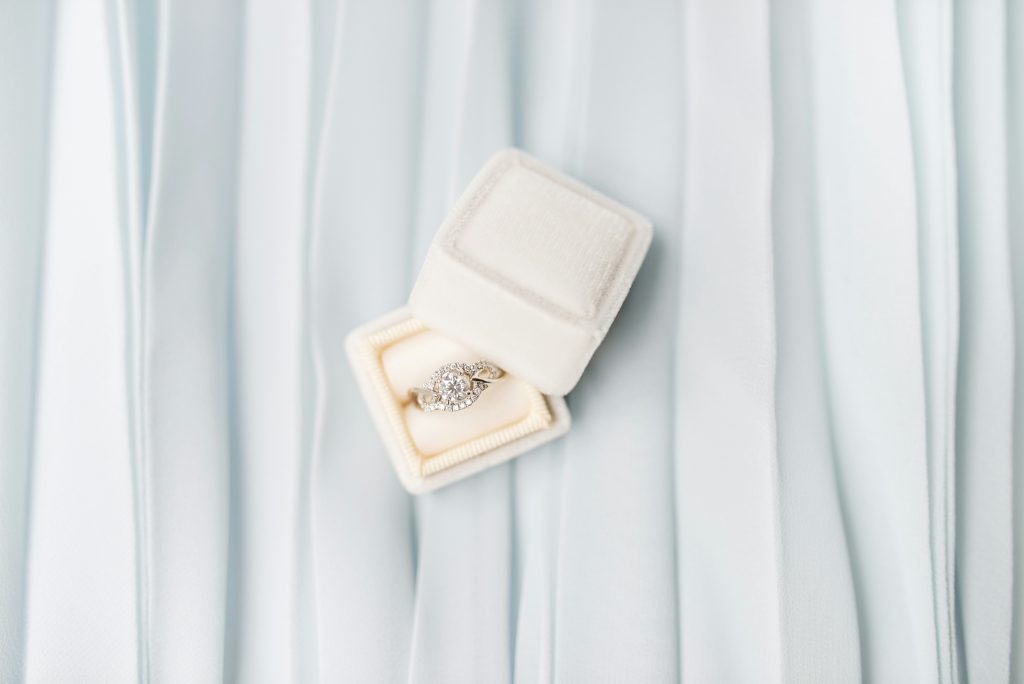
How to Protect Your Diamonds from Damage
While diamonds are resilient, there are certain precautions you can take to protect them from unnecessary damage. By being mindful of how and when you wear your diamond jewelry, you can significantly reduce the risk of chips, cracks, or wear and tear on the setting.
- Be Mindful of Hard Surfaces
Even though diamonds are the hardest natural material, they can still be chipped or damaged if struck against hard surfaces. When wearing diamond rings, bracelets, or watches, take care not to knock them against countertops, walls, or furniture. For instance, removing your diamond jewelry before performing manual tasks like lifting heavy objects or using tools can prevent accidental impact. - Avoid Heat and Sudden Temperature Changes
Diamonds themselves are not particularly sensitive to heat, but sudden temperature changes can cause damage to the setting or any treatments the diamond has undergone. For example, clarity-enhanced diamonds (which have undergone laser drilling or fracture filling) can be affected by extreme heat. If you’re working in environments where temperature fluctuations are common, consider removing your diamond jewelry to avoid potential damage. - Insure Your Diamonds
One of the most important steps you can take to protect your diamonds, particularly high-value pieces, is to insure them. Jewelry insurance provides financial coverage in the event of theft, loss, or accidental damage. Many homeowners’ or renters’ insurance policies offer the option to add jewelry riders, which specifically cover valuable items. Make sure your diamond jewelry is appraised regularly to ensure you have the appropriate level of coverage for its current market value.
Special Considerations for Different Types of Diamond Jewelry
Different types of diamond jewelry require specific care, depending on how often they’re worn and the type of setting used. Understanding the nuances of each piece will help you tailor your care routine to ensure longevity.
- Diamond Rings (Engagement Rings and Wedding Bands)
Rings, especially engagement rings and wedding bands, are typically worn daily and are exposed to more dirt, oils, and wear than other types of diamond jewelry. These pieces should be cleaned more frequently at home, ideally once a month, and professionally cleaned at least once a year. Because rings are exposed to more physical activity, inspect the prongs regularly to ensure the diamond is securely set. - Diamond Earrings
Diamond earrings tend to collect oils from your skin and hair products, which can dull their sparkle. Cleaning them once a month with a mild soap and water solution should be sufficient to keep them looking bright. For earrings with intricate settings, such as halo or pavé designs, professional cleaning is recommended to remove dirt buildup in small crevices. - Diamond Necklaces and Pendants
While diamond necklaces and pendants generally don’t suffer the same level of wear as rings, they are still prone to dirt and dust accumulation, especially around the setting. If the chain is made from softer metals like gold, be mindful of scratches and tangles. Cleaning diamond necklaces every few months, combined with occasional professional polishing, will help maintain their sparkle. - Bracelets and Watches with Diamonds
Bracelets and watches are more likely to be subjected to bumps and scratches as they are worn on the wrist, an area prone to impact. Diamond-encrusted watches or tennis bracelets need extra care to avoid damage to both the diamonds and the metal setting. These pieces should be cleaned more frequently and carefully inspected for loose stones.
Restoring and Repairing Damaged Diamonds
If your diamond has been chipped, cracked, or damaged, it’s important to seek professional repair services. Depending on the extent of the damage, there are several options for restoring your diamond.
- Diamond Recutting
In cases of significant damage, recutting the diamond may be necessary. Recutting involves reshaping the diamond to remove the damaged area while preserving as much of the original stone as possible. While this process can reduce the carat weight, it restores the brilliance and value of the diamond. Recutting should only be performed by highly skilled professionals, as improper handling can further damage the stone. - Polishing Minor Damage
For smaller chips or surface scratches, professional polishing may be enough to restore the diamond’s appearance. Polishing removes surface-level damage without affecting the carat weight or overall shape of the diamond. - Resetting the Diamond
If the damage is localized to the setting rather than the diamond itself, resetting the diamond into a new or reinforced setting can resolve the issue. This is a common solution for jewelry with worn prongs or bent metal that compromises the security of the diamond.
Conclusion
Caring for your diamonds is essential to maintaining their beauty, brilliance, and value over time. With regular cleaning, proper storage, and professional maintenance, you can ensure that your diamond jewelry remains in pristine condition for years to come. By following these comprehensive care tips, you’ll not only preserve the sparkle of your diamonds but also protect the investment you’ve made in these precious stones.


